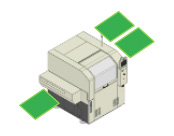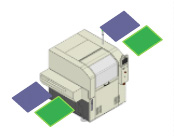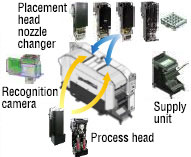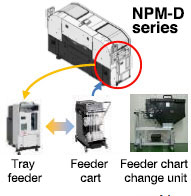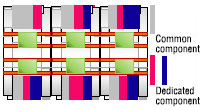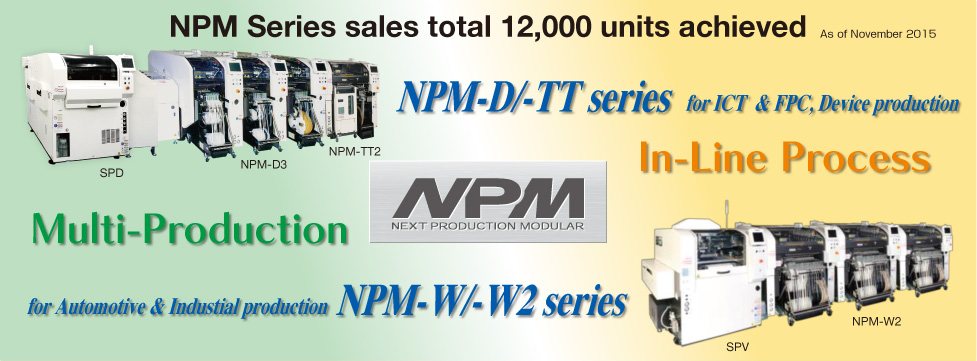
Panasonic’s Flexible Dual Lane Board Handling Technology offers increased productivity and model changeover efficiency
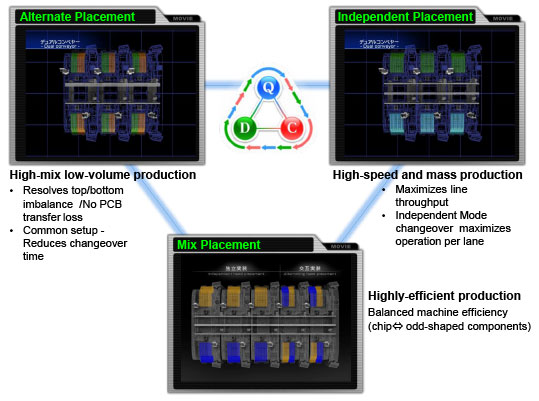
Panasonic’s SPV printer maximizes Dual Lane / Flexible Production
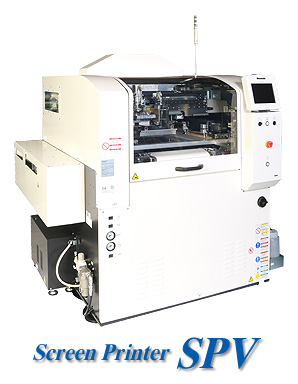
- Realizes the print style that matches the customer's production method using the substrate board shuttle system
High-speed dual-lane layout with less investment - Print cycle time of 10 seconds (including clean cycle)
- Achieve a repeat positioning accuracy of the industry's top class
Function for Dual Lane / Multi Production
| Low-mix high- volume production | High-mix low-volume production | Reduction of intermediate stock |
|---|---|---|
|
1 to 2
|
Back-to-back setup
|
2 in 1
|
| Independent placement of same production | MJS, independent changeover | Simultaneous top/bot production |
Reduces the production lead time and WIP using SPV with a simultaneous production of multiple models
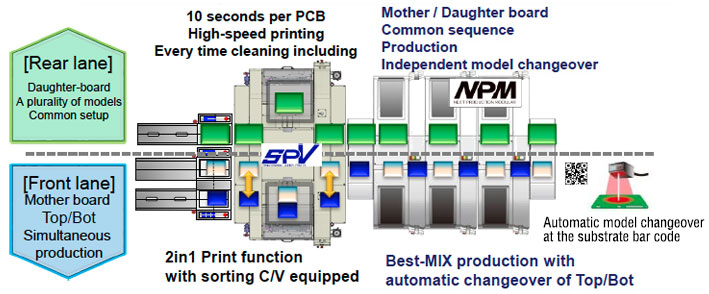
Line solution supporting various kinds/volumes and Responsive manufacturing
| Location-free Plug and play |
Supply unit specification change | Feeder cart change without machine stop (Independent changeover) |
|---|---|---|
|
The units can be attached to front/rear lane freely |
Specifications of the supply unit can be changed at your factory |
The feeder cart can be changed without stopping production on the opposite side lane |
| Automatic changeover Automatic replacement of support pins |
Common sequence MJS function |
|
|
Reading PCB ID and supporting changeover enable to minimize loss time
Automatic replacement of support pin is also available as optional item
|
Utilizing the multi-job scheduler (MJS) function enables to set components for multiple production data at once
Effective changeover on high-mix low-volume production improves throughput |
